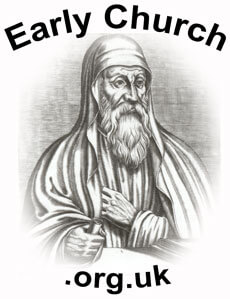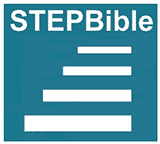Theology on the Web helps over 2.5 million people every year to find high quality theological resources that will help to equip them to serve God and to know Him better (2 Timothy 2:15). Like other websites that provide free services, it is dependent on donations to enable it to grow and develop and only 0.004% of visitors currently do so. If you would like to support this site, please use one of the options to the right of this message.
Synopsis
PACHOMIUS, b. in the Egyptian
province of the Thebais about 292; d. in Tabennae, an island in the Nile, in
348; a younger contemporary of St. Anthony; was the real founder of monastic
life. As long as the ascetic instinct inherent in Christianity remained in a
healthy condition, it found its satisfaction within the life of the
congregation. But by degrees, as the church became more and more familiarized
with the surrounding world, the ascetic instinct, under the influence of the
dualism of the Neo-Platonizing, Alexandrian theology, and seduced by the
example of the monks of the Serapis worship, fell into extravagances; and the
ascetics fled into the deserts, and became hermits. Pachomius was also swayed
by this tendency; and in his twentieth year he settled in the desert to fight
for the prize of asceticism under the training of Palemon, one of the most
austere pupils of St. Anthony. But the movement had already reached such a
speed and such a compass, that it could not go on any farther without some kind
of organization; and to have effected this is the great merit of Pachomius.
Something had already been done before his tune. As the desert became peopled
by anchorets, the laura arose; that is, a number of novices in
asceticism built their cells around the cell of some hero in asceticism, in
order to follow his example, and to receive his training; and thus the first
trace of organization originated. Pachomius made the next step, transforming
the laura in to a monastery. In the Island of Tabennae he founded the
first caenobium … ; that is, a house in which the anchorets, who
had hitherto lived separately, each pursuing his own scheme of asceticism, came
to live together, with common practices and exercises, according to certain
fixed rules, and under the guidance or government of a director. The success of
Pachomius’ undertaking was enormous. Palladius states that in his time the
monastery of Tabennae contained no less than fourteen hundred monks. Of the
original rules of Pachomius, nothing certain is known. The Regula S.
Pachomii, containing a hundred and ninety-four articles, and printed by
Holstenius, in his Codex Regularum, i. pp. 26-36, and a shorter
regulative, containing fourteen articles, and printed by Gazaus as an appendix
to his edition of Cassianus’ De Caenobiorum Instit., may contain
fragments of the original rules; but their authenticity cannot be established.
They present many curious features: thus, the monks are divided into
twenty-four classes, named after the letters of the alphabet, the simple souls
ranking in the first classes, the smart fellows in the last; but in this
respect they agree very well with the writings generally ascribed by antiquity
to Pachomius, Monita ad Manachos, Verba Mystica, Letters, etc., printed by
Holstenius, l.c., most of [1716] which are entirely unintelligible. See,
besides the above-mentioned writers, acta Sanct., May 14; GENNADIUS: De
Viris illus., cap. 7.
Mangold, "PACHOMIUS," Philip
Schaff, ed., A Religious Encyclopaedia or Dictionary of Biblical,
Historical, Doctrinal, and Practical Theology, 3rd edn, Vol. 3. Toronto,
New York & London: Funk & Wagnalls Company, 1894. pp.1715-1716. [Greek
title excluded]
 |
Derwas
J. Chitty, The Desert a City: An Introduction to the Study of Egyptian and
Palestinian Monasticism Under the Christian Empire. St Vladimir's Seminary
Press, 1977. Pbk. ISBN: 0913836451. pp.222. |
 |
 James E. Goehring, "New
Frontiers in Pachomian Studies," Birger A. Pearson & James E. Goehring,
eds. The Roots of Egyptian Christianity. Studies in Antiquity and
Christianity. Philadelphia: Fortress, 1986. Pbk. ISBN: 0800627067.
pp.236-257. James E. Goehring, "New
Frontiers in Pachomian Studies," Birger A. Pearson & James E. Goehring,
eds. The Roots of Egyptian Christianity. Studies in Antiquity and
Christianity. Philadelphia: Fortress, 1986. Pbk. ISBN: 0800627067.
pp.236-257. |
 |
James E. Goehring, "Withdrawing from
the Desert: Pachomius and the Development of Village Monasticism in Upper
Egypt," Harvard Theological Review 89.3 (1996): 267-285. |
 |
Charles W. Hedrick, "Gnostic
Proclivities in the Greek Life of Pachomius and the Sitz im Leben of the Nag
Hammadi Library," Novum Testamentum 22.1 (1980): 78-94. |
 |
 P. Rousseau, Pachomius: The Making of a Community in
Fourth-Century Egypt. Berkeley: University of California Press, 1985. Pbk.
ISBN: 0520219597. pp.250. P. Rousseau, Pachomius: The Making of a Community in
Fourth-Century Egypt. Berkeley: University of California Press, 1985. Pbk.
ISBN: 0520219597. pp.250. |
 |
G.T. Veloso, "Early Monastic Stability
(A.D. 400-550). A Textual Study of the Regulatory Latin Pachomian Texts," Philippiniana Sacra 8 (1973):240-68. |
 |
Rodolph Yanney, "The Illness and Death
of Saint Pachomius," Coptic Church Review 13.2 (1992):
54-58. |
Related Subjects








 James E. Goehring, "New
Frontiers in Pachomian Studies," Birger A. Pearson & James E. Goehring,
eds. The Roots of Egyptian Christianity. Studies in Antiquity and
Christianity. Philadelphia: Fortress, 1986. Pbk. ISBN: 0800627067.
pp.236-257.
James E. Goehring, "New
Frontiers in Pachomian Studies," Birger A. Pearson & James E. Goehring,
eds. The Roots of Egyptian Christianity. Studies in Antiquity and
Christianity. Philadelphia: Fortress, 1986. Pbk. ISBN: 0800627067.
pp.236-257. P. Rousseau, Pachomius: The Making of a Community in
Fourth-Century Egypt. Berkeley: University of California Press, 1985. Pbk.
ISBN: 0520219597. pp.250.
P. Rousseau, Pachomius: The Making of a Community in
Fourth-Century Egypt. Berkeley: University of California Press, 1985. Pbk.
ISBN: 0520219597. pp.250.


